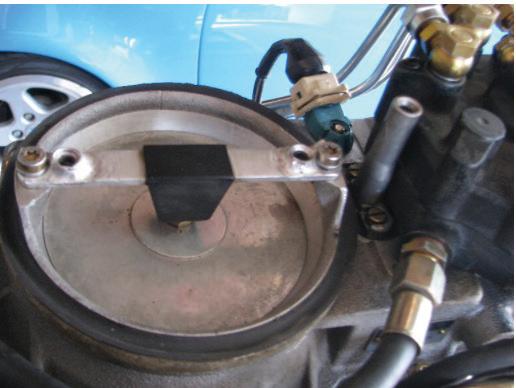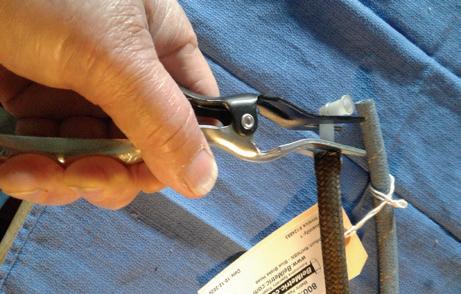
6 minute read
Rice’s Ramblings
RICE’S Ramblings Story and Photos by Lee Rice
Welcome news is Road & Track is back in print.
Advertisement
Welcome news is Road & Track is back in print. Last year I heard they were going to only an all-digital format. I was at end of my subscription so that was the end for me. I love print on quality paper for many reasons and all digital format was the end for me.
Then, last October my brother sent me a Road & Track hard copy!?! November / December 2020. This one came with a letter to ‘our community’ announcing Road & Track’s return, bigger and better than ever, and as a more fully loaded bi-monthly. This one is great. I see and feel a different attitude and what I loved about cars and how I learned what they are about without buying one! Back then, I could not even afford a set of tire inflation caps for a 250 GT Ferrari, but in R & T I learned some of the mystic of driving and living with one.
And 2021, please be kind to all of us!
This issuer had a 3,000-mile drive from New York to Newport Beach ending at the beautiful Road & Track building at 1499 Monrovia. I’ve been there a number of times, long ago. So, with it being in the heart of OCR, its home for us PCA-OCR’s! The trip was also completed with Porsche Taycan EV. Yep, a battery car and its 19 stops coast-to-coast used a 200-mile drive with a 30 min recharge. I think for charging, coffee, tea, or potty break. The Taycan is a bruiser at 4,777 pounds! But the drive was nicely completed and many points were revealed that I think would not have been in the earlier R&T. WELCOME BACK!
With some Porsches resting up for 2021, or stored for winter, this may apply.
I have a `77 Turbo Carrera that’s been sitting and sitting. Maybe 4 or 5 years since it’s been driven. The CIS system is gummed up and the gas tank needs draining.
What’s the best way to bring it back to life? Take apart the CIS system and flush it out? How far do I need to dismantle? What chemical(s) would you recommend? Thank you in advance! ‘OCRer’ in need!
Happy New Year 1977 Turbo Carrera.
A 4 to 5-year-old sitting 1977 Turbo Carrera should NOT have gummed up fuel system or Fuel Injection if it has had at least minimal care. That is unless you gassed up in some foreign land? What you need now is a Fuel System flushing and refreshing.
I would disconnect the fuel hose going to the CIS. Fuel Injection Fuel Distributor. The FUEL DISTRIBUTOR is the large black fuel distribution unit mounted up on top of the engine with the fuel lines coming out of it.
So first remove the metal AIR FILTER UNIT on top of the AIR METER UNIT.
Then remove the fuel into the Fuel Distributor. That is the back-rubber hose supplying fuel to the Fuel Distributor (17 mm).
Now you need a container to flush the old fuel out.
Gasoline is EXTREMELY FLAMABLE. CAUTION! Please USE GREAT CARE. I suggest using a plastic 5-gallon gasoline container with a long pour spout so you can place the removed fuel hose in the snout of the gas can.
CIS AIR METER white connector. Later one with push wire to release.

Then:
1. Turn the key ON. 2. Place the disconnected fuel hose into the fuel can.
3. Remove the CIS AIR METER wiring harnesses plastic connector plug (you may have to wiggle it sideto- side and pulling) on the forward side of the Air Meter. The FUEL PUMPS WILL THEN BOTH RUN, instantly!
4. BE READY, in case you need to stop, you need to push the plug back on.
5. Let the pumps and fuel run to empty out fuel from the tank.
*You may need another fuel container, depending on how full the tank is?
When the fuel pumps start to run unevenly, it’s getting low on fuel, STOP! The fuel pumps NEED fuel flowing through them to stay cool.
Key: OFF Now with the fuel tank mostly empty, replace the FUEL FILTER (930.139.00 or KL-22) Now put at least 3 gallons of new fuel in the tank. Then run the Fuel Pumps again through the new filter and out and into the fuel can. One gallon or so.
Key: OFF Reinstall the black Fuel Hose back onto the Fuel Distributor.
Key: ON. It will take a few seconds to a minute to purge most of the air in the system-out.
I push down the air Meter sensor plate and listen for the Fuel Distributor and injectors to “hiss” and “squeal” as air is purged. Don’t overdo it. Key: OFF. With nonoperational engines, I like to turn the crankshaft slowly with a hand wrench to ensure free rotation. I use a large box wrench on the fan pulley nut (16mm) and pushing against the V-belt to prevent belt slippage, I turn through one full cycle so that is: 720 degrees.
Then, I remove BOTH #1 & #2 Fuel Pump RELAYS (red) under the front electrical panel. See the back side of the FUSE-RELAY COVER (P.S. I paint the back side with white spray paint. This results in being able to see the labels and placements a whole lot easier, especially in the dark and in the rain. That does seem to be when stuff goes bad.)
Then I crank the engine over and check the OIL PRESSURE - Green OIL LIGHT to go out, and the OIL PRESSURE GAUGE to rise. The green light should go out in a few seconds of cranking the engine and then see Oil Pressure rise up near or to 10-15 PSI. OK? STOP.
Then install both Fuel Pump Relays and start her up!
You may have one-cylinder miss fire a bit or run rough as air purging continues, but you can lightly accelerate the throttle, up and down, a few times to flush out most of the remaining air. There will still be some air in there!
On fill up, FIRST, before fueling add 2 oz. STA-BIL GREEN MARINE GRADE Fuel Stabilizer, + 2 oz of MARVEL MYSTERY OIL, and I add a half bottle (8oz.) of Chevron TECHRON.
Then driving, warmed up with all gauges normal, you NEED to use some W.O.T. That’s Wide-Open Throttle, to flush the remaining air from the Fuel Injection System.
BRAKE-CLUTCH HOSE REMOVAL TOOL.

Amazon: “brake hose removal tool” As you drive with more throttle, you will also be flushing remaining air out of the fuel injectors as well. They don’t get to open very much during normal driving. I like to use a 50-mph street with light traffic and short shift to 3rd around 20 mph; then briefly, FULL THROTTLE and let it pull through rpm to speed.

Leslie Tool
After all the fuss over Blue Brake Hose & G-50 brake fluid hose, here is a must for removing the hose off the white nylon “adapter” or “nipple.” This is a quality Leslie Tool and it makes this job remarkably easy.
Godspeed Leslie F. Rice
PCA-OCR Tech riceturbos@sbcglobal.net
Rice’s Ramblings: Ask a Mechanic
If you have a question about your Porsche, please send in your question to Lee at:riceturbos@sbcglobal.net










